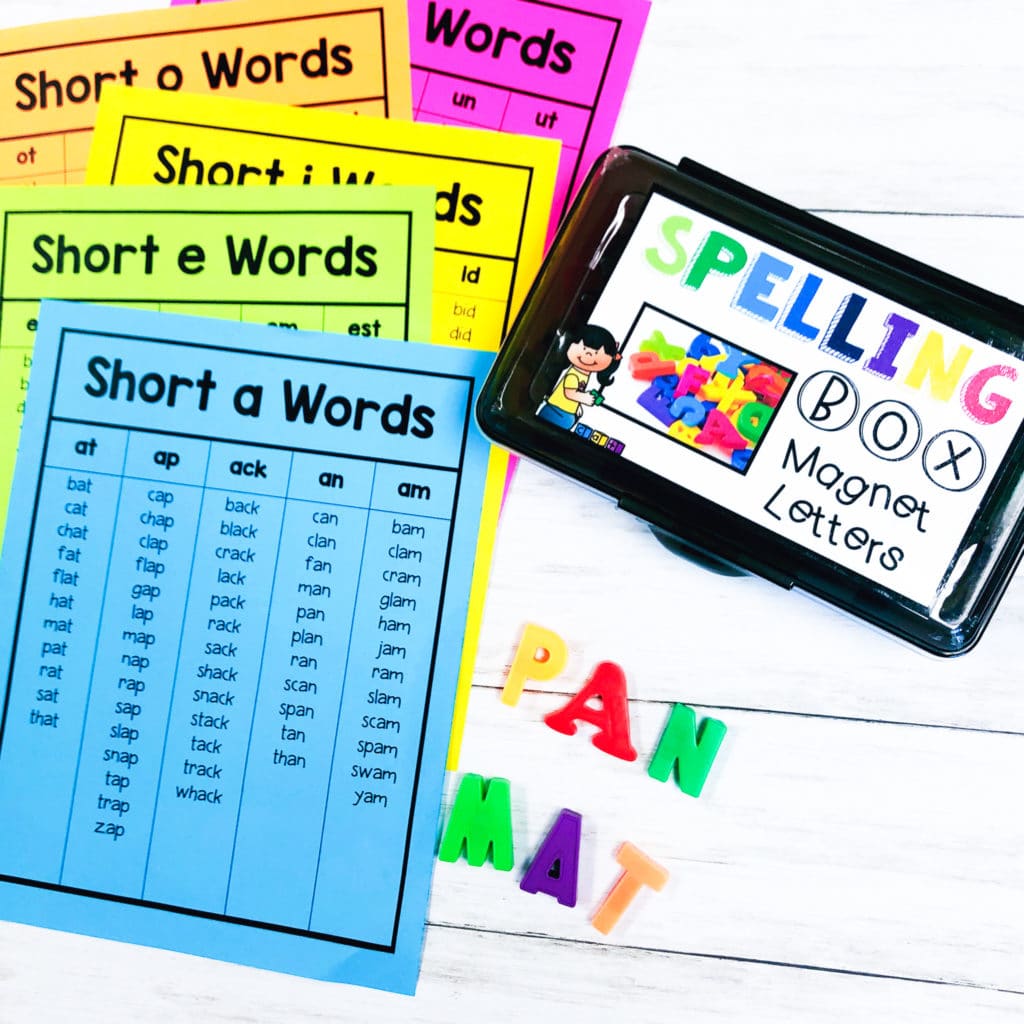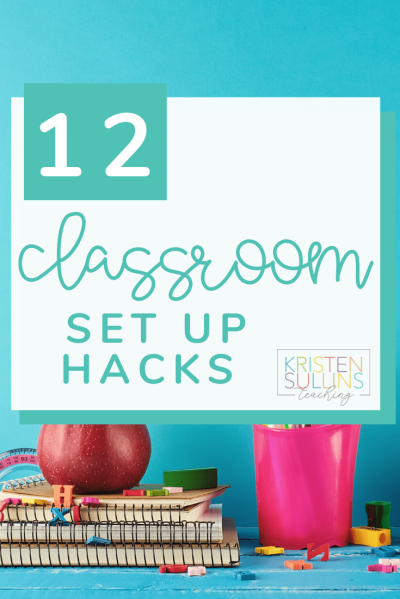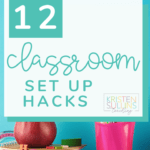You see them all the time… teacher tips and hacks. Today I'm bringing my best tips for setting up your classroom.
When setting up your classroom, there are SO many different things you have to think about!! But the number one thing that I want you to use when making your decisions is: “How can I make my students more independent?”.
By focusing on student independence, you will be saving yourself and your instruction from interruptions by things like “Mrs. Sullins, I need a band-aid” or “Mrs. Sullins, the page in my book is torn”.
Having specific things or spots in your classroom for students to solve these problems on your own is not only beneficial for you, but you are teaching your students vital life skills.
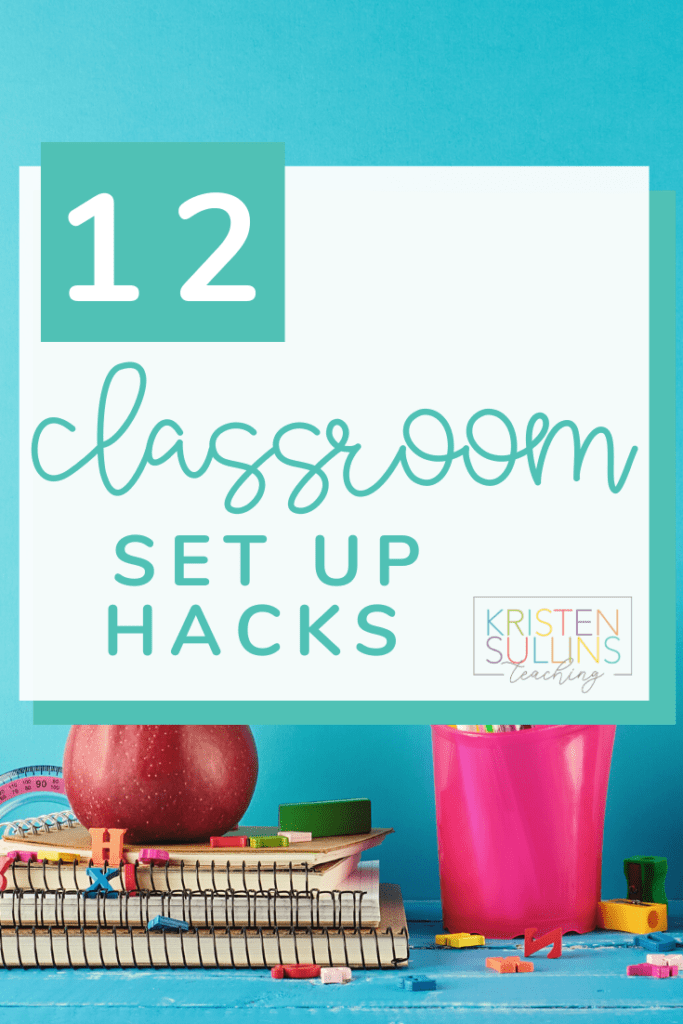
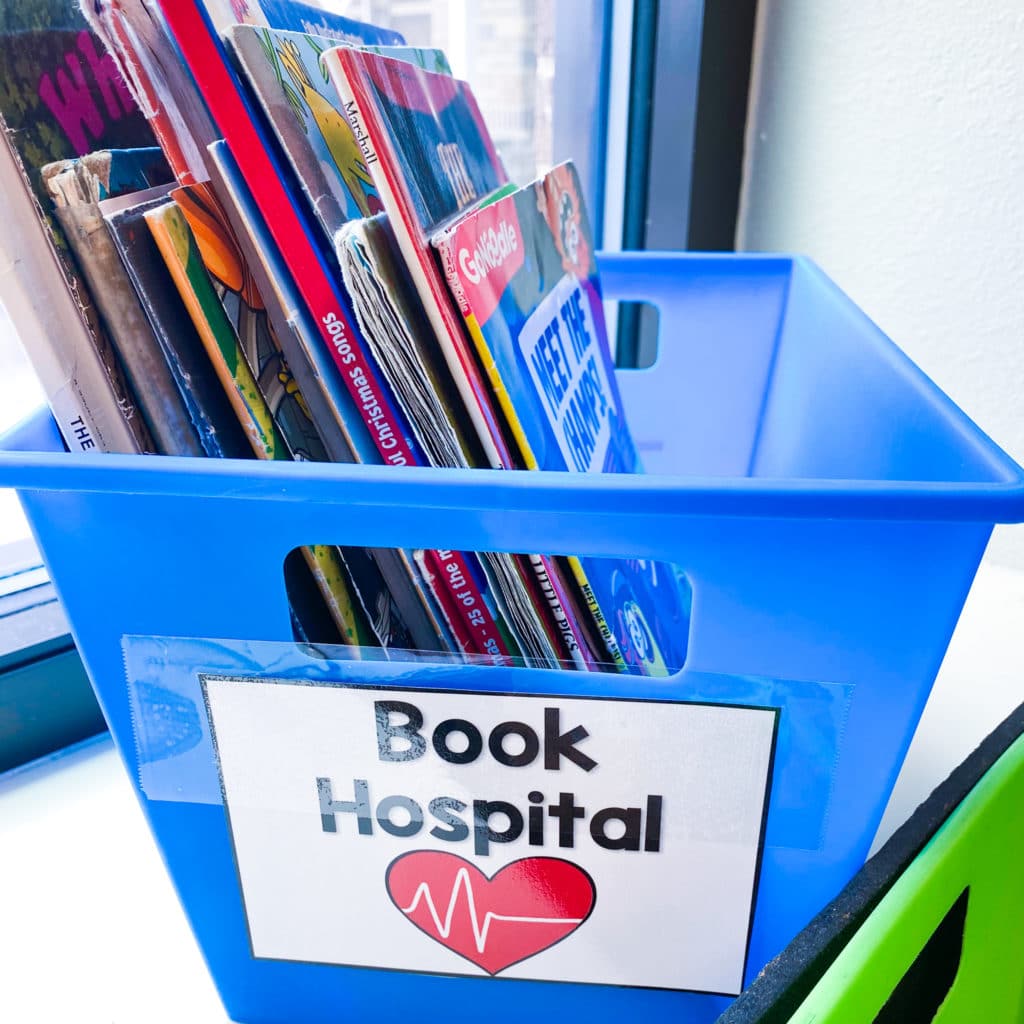
Book Hospital
Having a place for students to put their ripped or torn books is a must have in my classroom library. It allows students to easily and responsibly put away the books that need a little TLC.
The best part, they can stay in the hospital as long as they need to until I can get around to fixing them (which, if I'm being honest, is usually only during Summer and Christmas break). One books are fixed, they go back into circulation in the classroom library.
Leveled Book Box Labels
I've written an entire blog post on how I organize my classroom library, so I won't go into too much detail here, but what I do want to point out that my section of leveled books has room for me to put a sticky note or write with dry erase markers to show students which level I want them to book shop from for that week.
The rule is “pick two from the box with your name” then they can pick two from any other interest/genre boxes.
Read more about my classroom library set up here. You can also download these labels and more for free in the Free Resource Library.
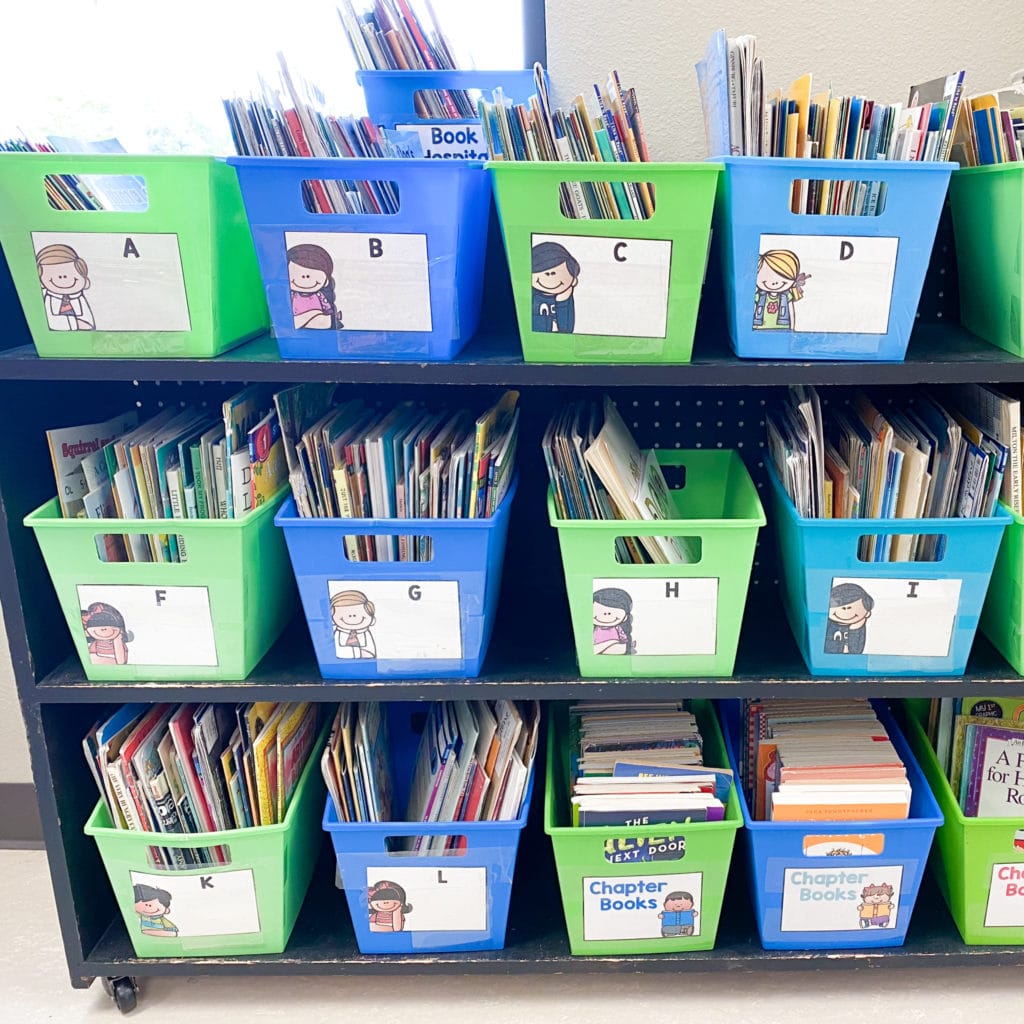
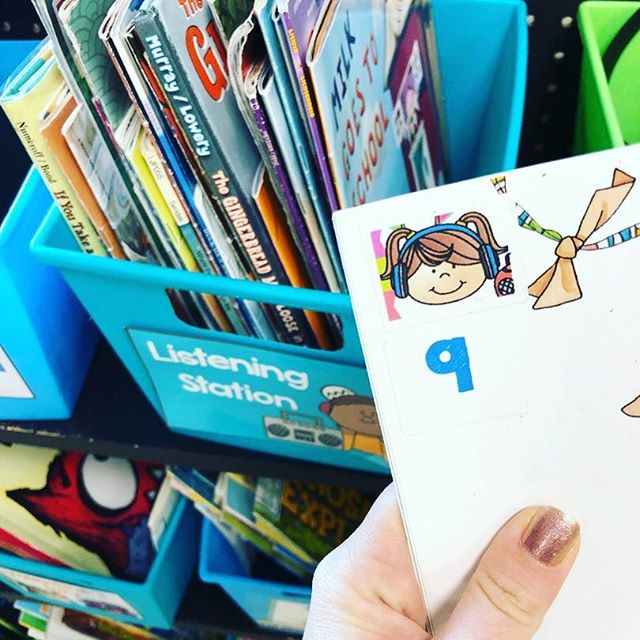
Listening Library Number Labels
Sticking with the book theme, labeling your listening library with numbers is a great way for early learners (students who can't read yet) to utilize your listening library independently.
I start with a designated listening library sticker so that students know these books belong in the listening station.
Then, I label my books with a number label so that students can easily match their book to the corresponding music file in our iTunes library or Google Drive folder.
If you do not have a digital listening library, you could still label the cd case that matches the book.
Boo-Boo Basket
Bandaids. Such a hot topic among first graders. It's the magic cure for just about everything, but I hate having to stop instruction to go get one and put it on a student… so, I created the Boo-Boo Basket.
This basket sits in an area that students can access at all times. They don't need permission, they just go and get a band-aid when they need one and take care of it themselves.
Now, I will say that you have to monitor and teach students when it is okay and not okay to get a band-aid.
But here's the amazing thing, because they have access to it at all times, it loses its appeal to them. I originally expected students to abuse their privilege, but once the newness wears off, they forget about it!
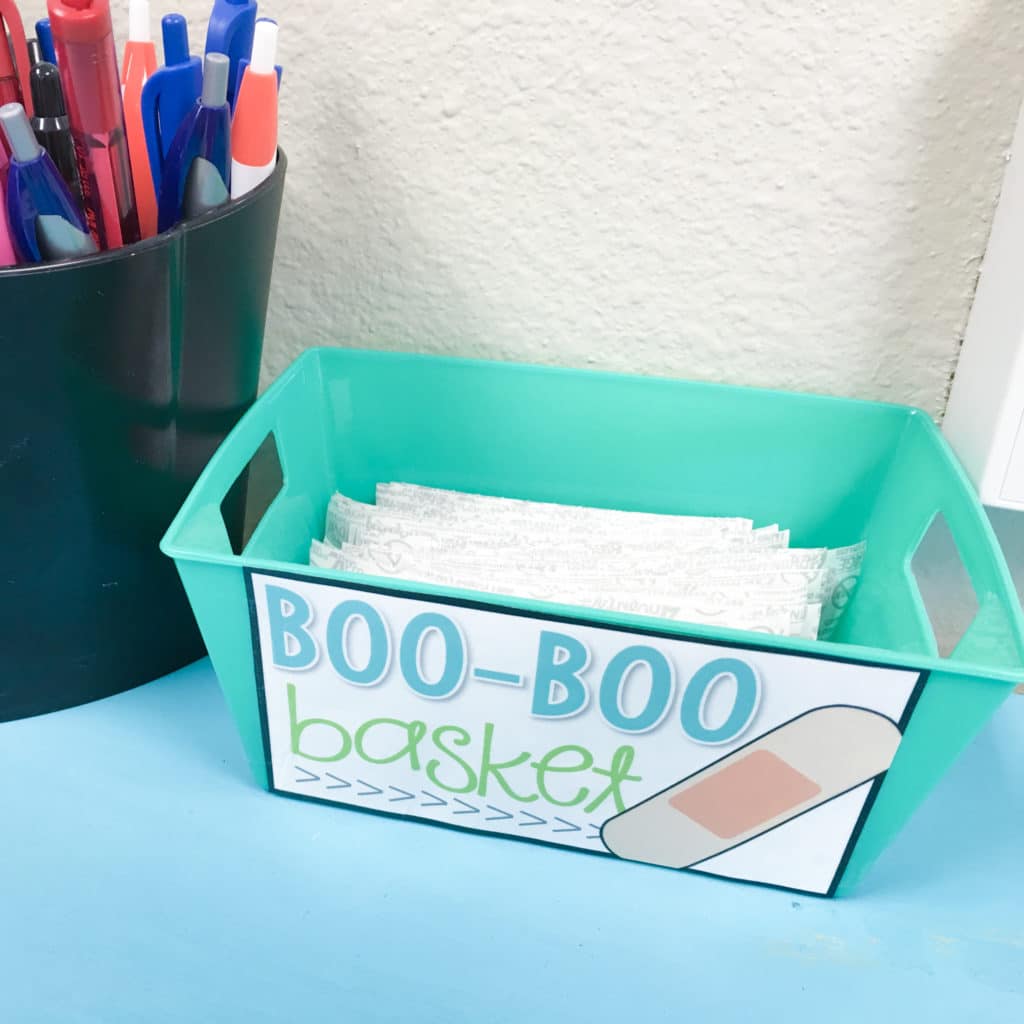
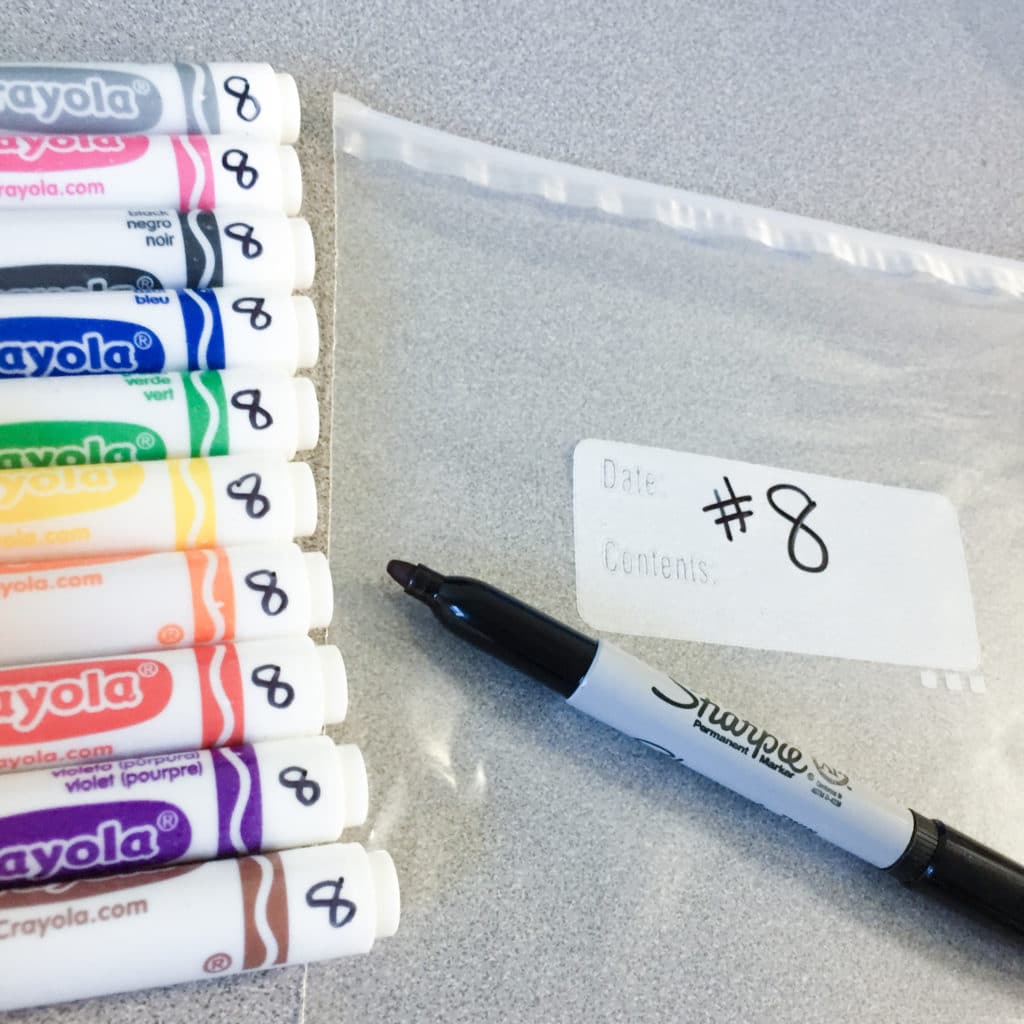
Student Markers
Okay, I admit, this one is a little OCD on my part, but my kids COULD NOT keep up with their markers!! I know it's the same way with crayons but those are little more plentiful in an elementary classroom. Markers however, are not.
So, a few years ago I decided that I was going to number each and every marker with their student number so that if we found a lone marker rolling on the floor then we could easily tell who it belonged to.
Now, if you find a trick for keeping those marker lids on, you have to tell me your secret!
Also, it's worth mentioning that I've seen some really cool ideas on Pinterest/Instagram that involve duct taping all of the lids together to keep the markers together as a set! I may end up trying that idea, too!
Puzzle Storage
Puzzles are something that typically are and absolutely should be in every Elementary classroom. They are a great way for students to practice a skill and provide an excellent self-checking feature that leads to independent learners.
Whether you have station puzzles or early finisher puzzles, storage can sometimes be tricky.
My suggestion to you is to find an inexpensive type of storage box that you can use to store all of your puzzles in. I use Tupperware boxes from Wal-Mart that are usually about 2 for $1.
The reason this is a “hack” for making independent learners is that #1 it gives them choice over which puzzle they want to do because they can easily see what each puzzle is.
But more importantly, when you find a missing puzzle piece later in the day, students can look inside each box and see where the missing piece needs to go.
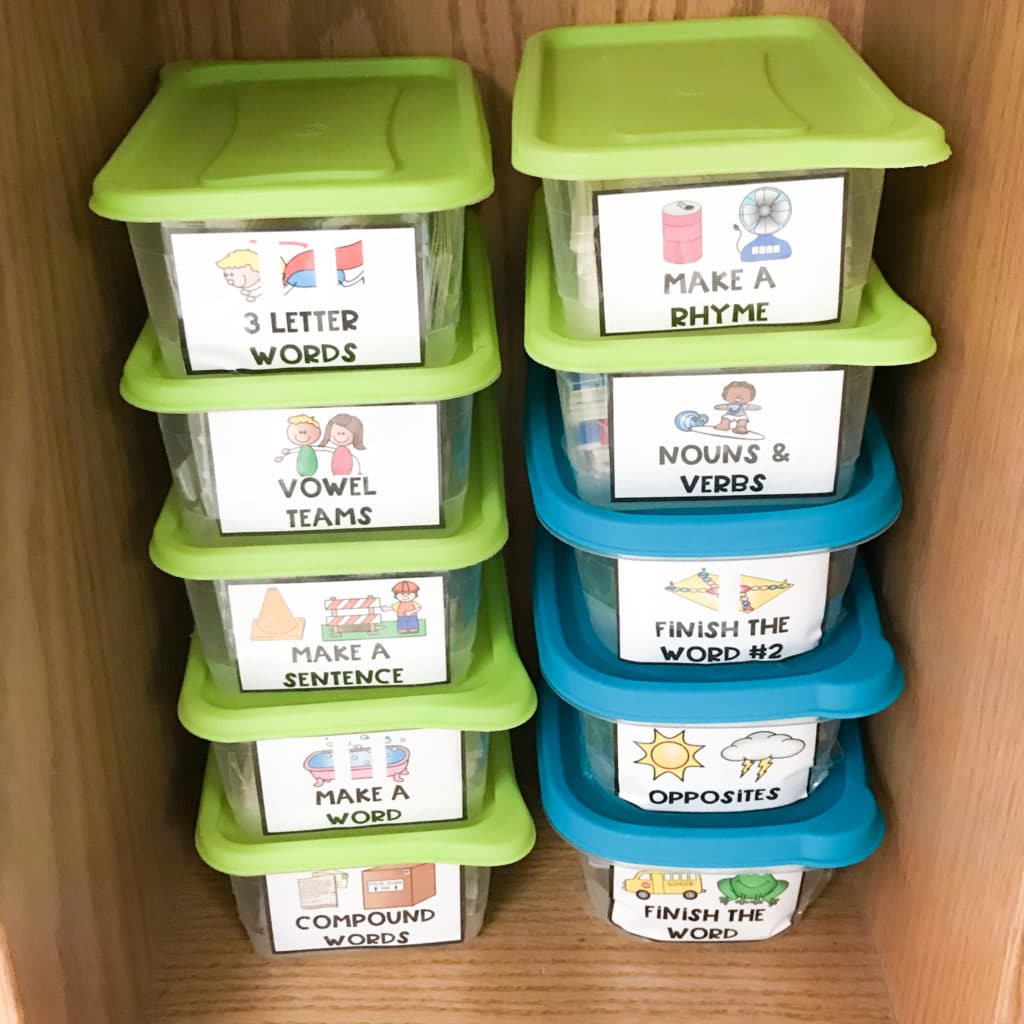
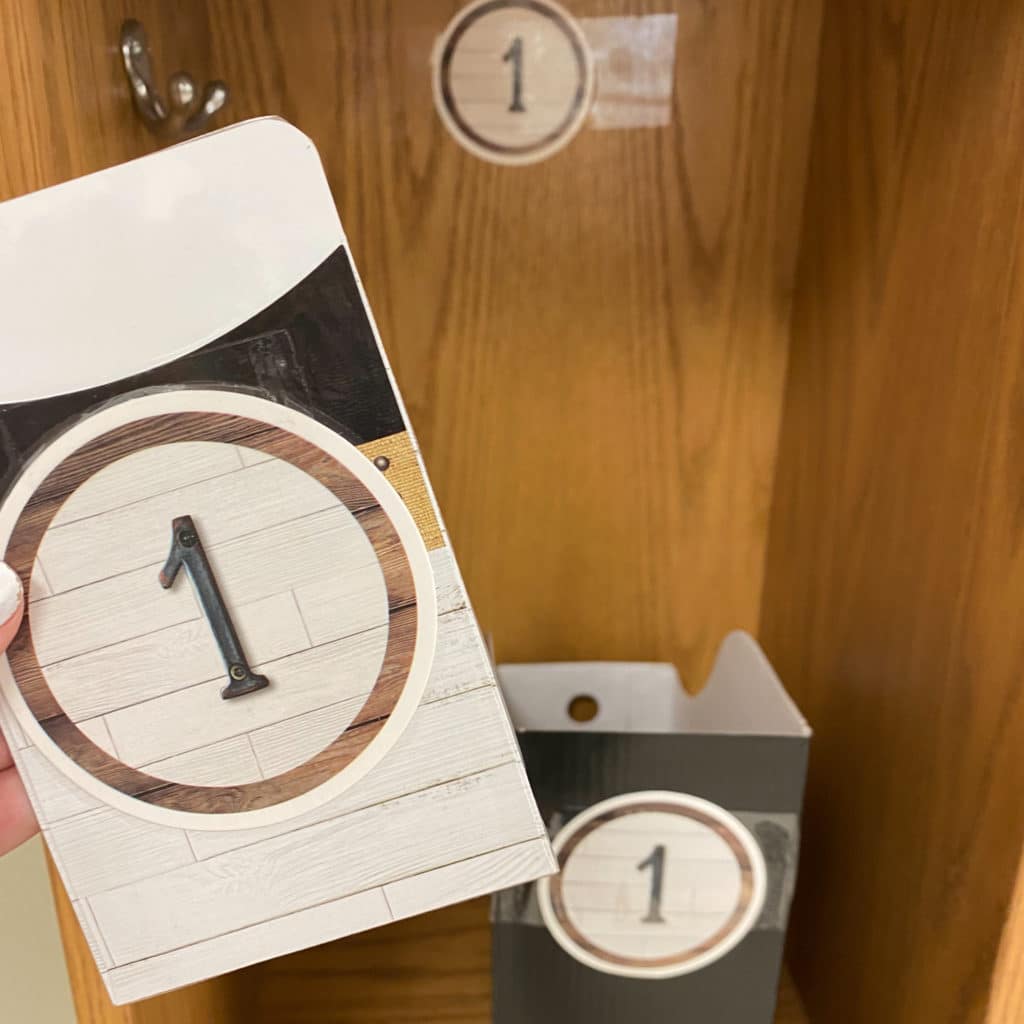
Calendar Numbers
My first few years teaching I put student names on EVERYTHING. Nine years into teaching I now put numbers on everything. I hate how impersonal it can feel, but it simply isn't worth the amount of time it takes to put up and take down names each year, especially when a new student moves in mid-year.
So, although there are some really cute things on TPT, I've found that calendar numbers are the best way to label things around the classroom. They are easy to read, it saves you ink and they go up to number 31 which is way more than I typically need.
The best part? They come in SUPER CUTE designs and now you can buy them right off Amazon and have them delivered to your door.
Alphabet Letters
I start every day (at least for the first few months of school) with a letter mat routine. Then, we use it every Monday to practice our new spelling pattern for the week.
It never, ever fails that someone loses a letter. On top of that, first graders and ziplock baggies are a nightmare.
So, a few years into teaching I bought these travel soap containers from Wal-Mart for $1 each. I labeled them with each student's number and thought I was making progress. It solved the ziplock bag issue, but, we were still losing letters.
About two years, I got super OCD again and wrote each student's number on the bottom of all 26 of their letters. Netflix and a bottle of wine may have been involved, but it honestly didn't take me as long as I thought it would.
Now, whenever we found a lost, lonely letter laying on the ground, we know exactly who it belongs to!

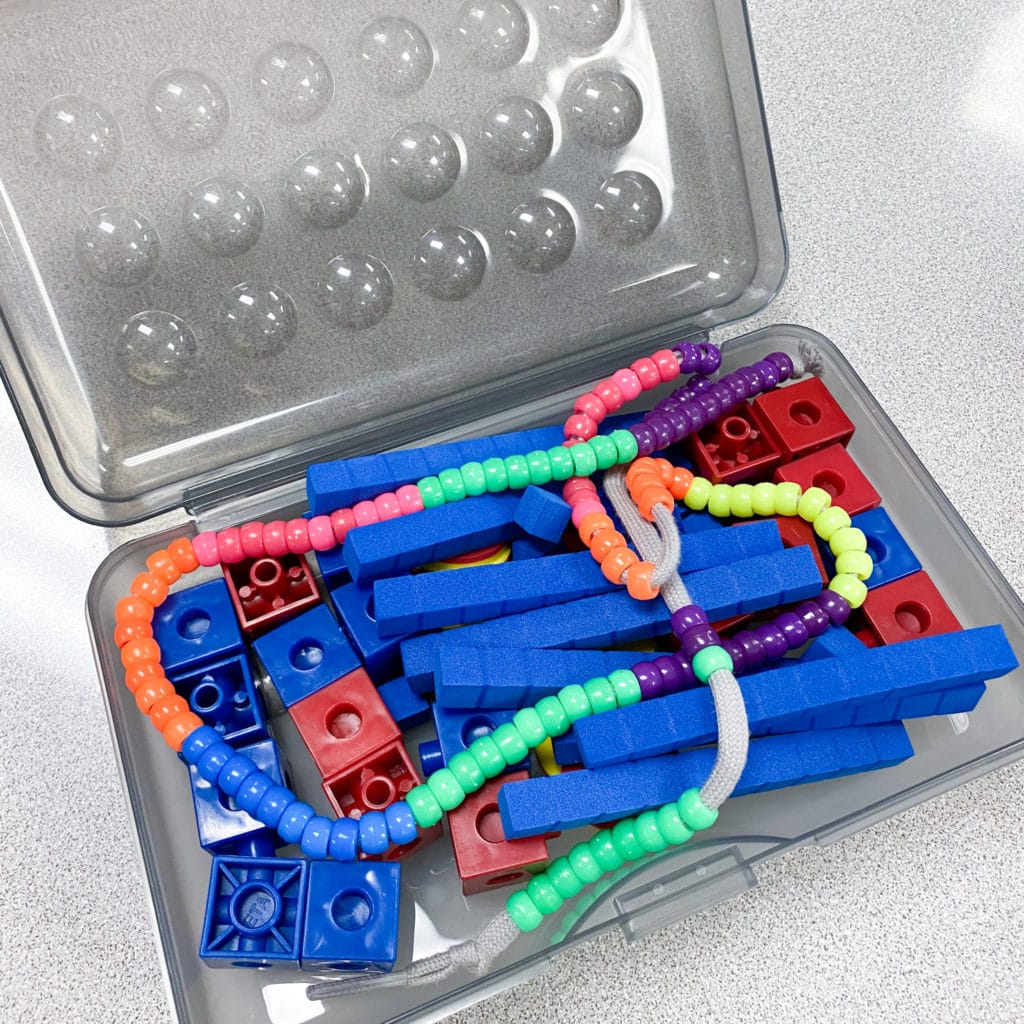
Math Manipulatives
Do you ever get tired of passing out math manipulatives at the beginning of you math block?
Or better yet, having to dig in your closet and switch out manipulatives between units?
Me too. That's why I started keeping individual sets of math manipulatives in extra pencil boxes.
Now, every student has everything they need for a math warm up in one box that they can go get at any time and take to their desk. (I would not recommend leaving these in the students' desks.)
I was talking with a teacher that seemed a little overwhelmed and told me “I don't have time to make all of those this summer”. Here's the great news, you don't have to.
Start with an empty box and simply add manipulatives as you need them throughout the year!
Extra Supplies
Okay, this one is not new. I started it my first year teaching and I know you have seen way cuter versions out there. BUT, I included it because it is an EXCELLENT way to help create independent learners.
Having extra supplies where students can easily access them without interrupting instruction is one of the number one things you should consider when setting up your classroom.
I have extra sets of everything from pencils to glue and even scissors, because let's be real, there's always that one kid that can never find their scissors!
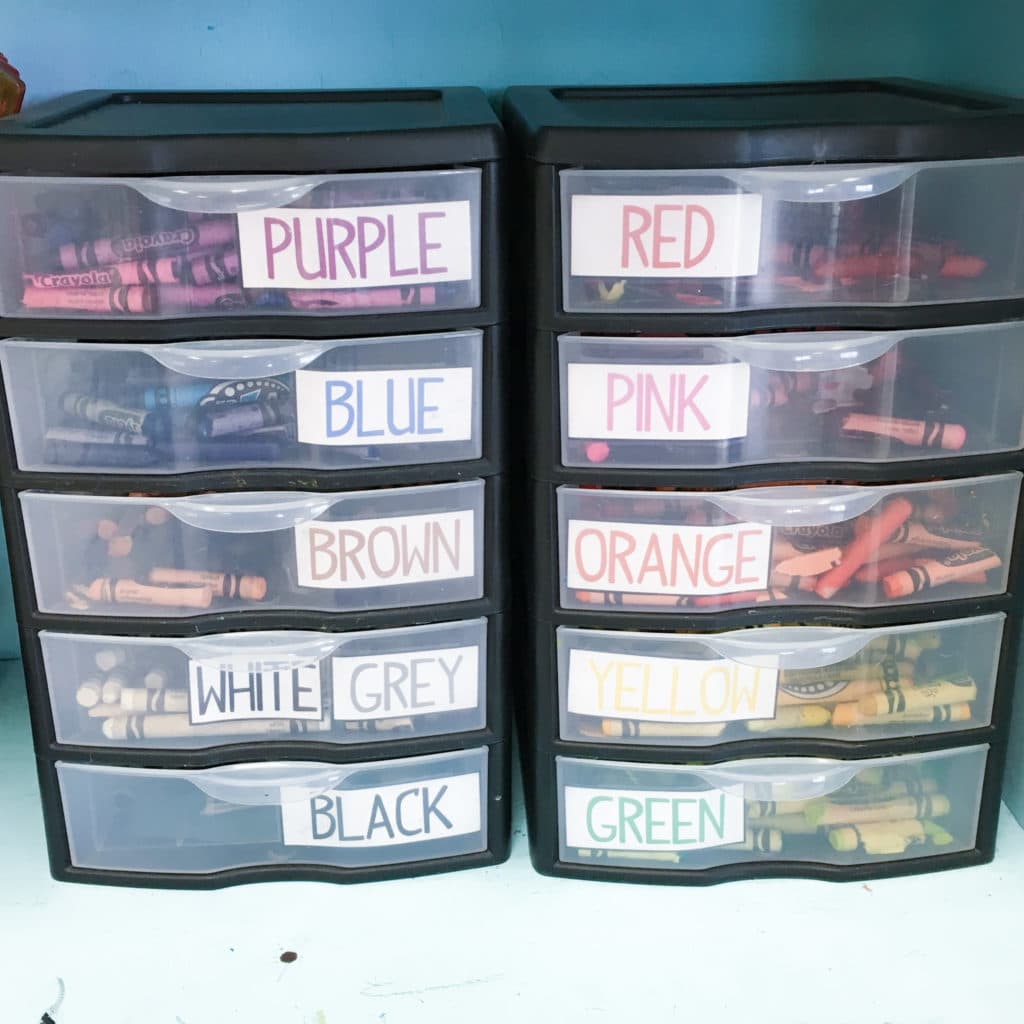
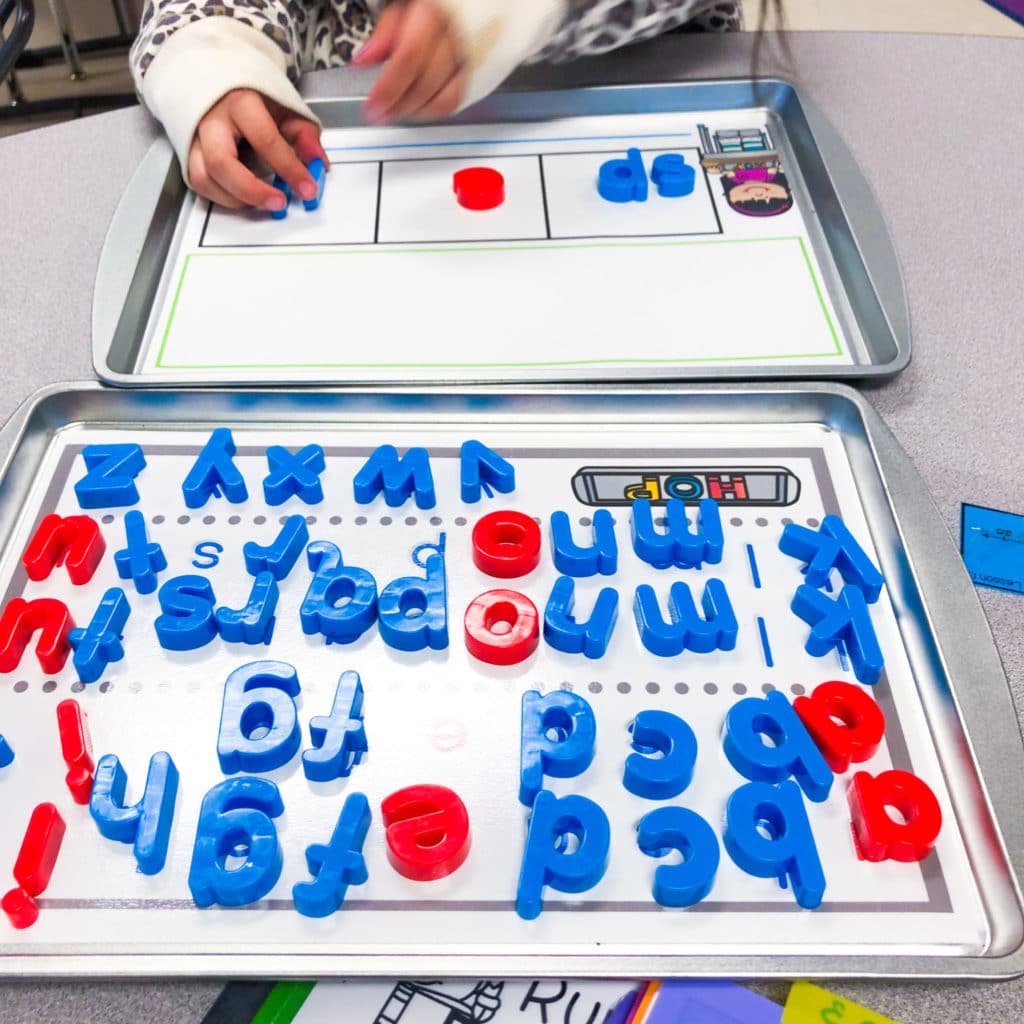
Guided Reading Alphabet Letters
Earlier I talked about the alphabet letters that we use everyday with our alphabet mat.
I also have a different set of alphabet letters that I use every day for word work at my guided reading table. These letters are magnetic and I've always used a cookie sheet with them, but we we were wasting so much time trying to find the letters we needed.
I created the two “cookie sheet mats” that you see in the picture to help keep our letters organized.
But more than that, I wanted students to be able to pull down all of the letters we needed to the second cookie sheet and into that green box so that they weren't constantly going back and forth.
Whether you use these mats or not, I strongly suggest putting a lot of thought into how you organize your materials for guided reading to help you utilize your time better.
Spelling Boxes
Ever get tired of constantly setting out new materials for the spelling station? This combination of spelling boxes and spelling lists gives students choice but requires very little management from you.
My spelling boxes stay the same all year, I simply switch out spelling list every 5-6 weeks depending on our spelling patterns.
Spelling boxes can include anything you already have in your classroom, or you can get super fun with multi-sensory options like gel or letter beads.
